Fantasia Diary 2015, Day 17: Synchronicity, The Dark Below, Traders, and Méliès et magie
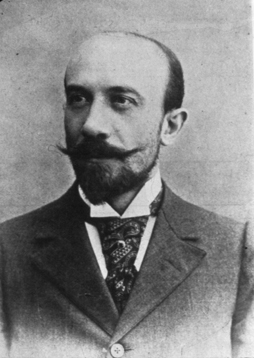 Thursday, July 30, looked like one of the odder days I had lined up at the Fantasia Festival. I’d head down to the De Sève Theatre early on to catch a new American science-fiction film called Synchronicity, then go to the screening room to watch a dialogue-free horror film called The Dark Below. After that, I’d go back to the De Sève to catch the Irish black comedy Traders, and finally wrap up with an event called Méliès et magie, an event presenting some of the classic short films by the first master of fantasy cinema. It looked like a varied day, though in the end it was less so than I’d expected.
Thursday, July 30, looked like one of the odder days I had lined up at the Fantasia Festival. I’d head down to the De Sève Theatre early on to catch a new American science-fiction film called Synchronicity, then go to the screening room to watch a dialogue-free horror film called The Dark Below. After that, I’d go back to the De Sève to catch the Irish black comedy Traders, and finally wrap up with an event called Méliès et magie, an event presenting some of the classic short films by the first master of fantasy cinema. It looked like a varied day, though in the end it was less so than I’d expected.
Synchronicity is directed by Jacob Gentry, known for his horror film The Signal, from a screenplay by Gentry and Alex Orr. It stars Chad McKnight as Jim Beale, the leader of a small team of physicists about to successfully achieve time travel — and Michael Ironside as a venture capitalist named Klaus Meisner angling to take over their invention, to play, as Meisner says, Edison to their Tesla. Caught in the middle is a mysterious woman named Abby (Brianne Davis) with ties to Meisner. Beale’s drawn to her, but whose side is she on? As the movie goes on, time loops back (or does it?) and events are reinterpreted. But then there’s a final revelation, and all we thought we knew is questioned.
I want to avoid giving away fundamental plot details. But I have to say the final twist of Synchronicity seems to me to be badly misjudged. It means not only that the logic we thought we were following up to that point was not true, but that there is no alternate logic to replace it. We’ve been watching a tissue of coincidences. It deflates the movie for me (and incidentally calls into question the intelligence of otherwise well-characterised scientists).
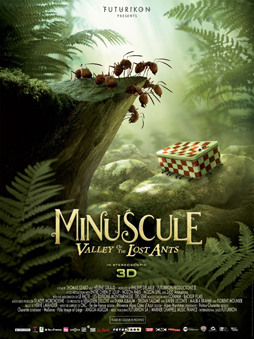 I took a day off from Fantasia on Tuesday, July 28, to run some errands and buy some groceries, then returned on Wednesday to begin a kind of mini-marathon that would carry me through to the end of the festival. I saw four movies Thursday, starting at the De Sève with a wordless 3D animated French film called Minuscule, about a ladybug who falls in with a group of ants who’ve liberated a box of sugar from an abandoned picnic. After that I went to the screening room to see an Australian horror-suspense movie called Observance. Then I went back to the De Sève for the semi-science-fictional German action movie Boy 7. After getting out of that one, I made a snap decision to run across the street to the Hall Theatre to watch the Korean action-comedy Big Match. Which turned out to be one of the better calls I made all festival.
I took a day off from Fantasia on Tuesday, July 28, to run some errands and buy some groceries, then returned on Wednesday to begin a kind of mini-marathon that would carry me through to the end of the festival. I saw four movies Thursday, starting at the De Sève with a wordless 3D animated French film called Minuscule, about a ladybug who falls in with a group of ants who’ve liberated a box of sugar from an abandoned picnic. After that I went to the screening room to see an Australian horror-suspense movie called Observance. Then I went back to the De Sève for the semi-science-fictional German action movie Boy 7. After getting out of that one, I made a snap decision to run across the street to the Hall Theatre to watch the Korean action-comedy Big Match. Which turned out to be one of the better calls I made all festival. 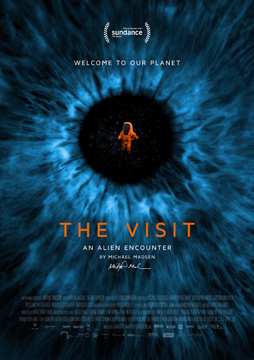 No-one’s a perfect critic, and I’ll readily confess to being less perfect than most. At any rate, sometimes a film’s best appreciated with a certain level of knowledge. Maybe you know too much about the film’s subject, and you see nothing new. Or you know too little, and you find yourself lost. In the latter case, at least, you can wonder whether your lack of knowledge is representative of a general audience, if not of whatever audience the artist has in mind. No critic’s going to be able to hit the sweet spot of knowing just enough, not every time out. Nobody’s perfect.
No-one’s a perfect critic, and I’ll readily confess to being less perfect than most. At any rate, sometimes a film’s best appreciated with a certain level of knowledge. Maybe you know too much about the film’s subject, and you see nothing new. Or you know too little, and you find yourself lost. In the latter case, at least, you can wonder whether your lack of knowledge is representative of a general audience, if not of whatever audience the artist has in mind. No critic’s going to be able to hit the sweet spot of knowing just enough, not every time out. Nobody’s perfect.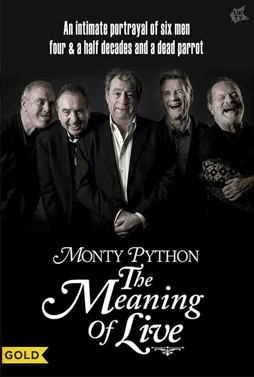 There’s what you expect from a movie, and then there’s what you get. Sometimes a good movie can be a little disappointing, because it gives you only more-or-less what you’d been expecting. And sometimes a movie can surprise you with just how good it is. So if I say that on Sunday, July 26, I had a good day at the Fantasia Festival, it actually means I had two very different experiences in the big Hall Theatre. First was a documentary, Monty Python: The Meaning of Live. And then a supernatural thriller starring Henry Rollins, He Never Died. Both were good. The second was surprisingly good.
There’s what you expect from a movie, and then there’s what you get. Sometimes a good movie can be a little disappointing, because it gives you only more-or-less what you’d been expecting. And sometimes a movie can surprise you with just how good it is. So if I say that on Sunday, July 26, I had a good day at the Fantasia Festival, it actually means I had two very different experiences in the big Hall Theatre. First was a documentary, Monty Python: The Meaning of Live. And then a supernatural thriller starring Henry Rollins, He Never Died. Both were good. The second was surprisingly good. Saturday, July 25, was an odd day. At 4 in the afternoon I was meeting my girlfriend and some other friends to watch Princess Jellyfish, a live-action adaptation of a manga that had already been adapted into an anime series. But because I had to queue for it with members of the media, I’d actually be waiting in a different line than the people I’d be seeing the movie with. So I decided I’d go to the Fantasia screening room first, and watch another film: Mamoru Oshii’s Nowhere Girl.
Saturday, July 25, was an odd day. At 4 in the afternoon I was meeting my girlfriend and some other friends to watch Princess Jellyfish, a live-action adaptation of a manga that had already been adapted into an anime series. But because I had to queue for it with members of the media, I’d actually be waiting in a different line than the people I’d be seeing the movie with. So I decided I’d go to the Fantasia screening room first, and watch another film: Mamoru Oshii’s Nowhere Girl.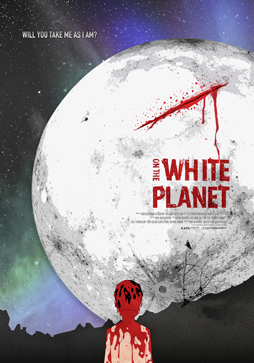 Thursday, July 23, was the first day of the Fantasia Festival I chose not to see any movies. Wandering down to the screening room was a very real temptation, but I desperately needed to do laundry and other household chores — as well as to write about the films I was seeing. In fact as I made my plans it seemed that I was entering a relatively light stretch of the schedule, before what looked like a killer weekend.
Thursday, July 23, was the first day of the Fantasia Festival I chose not to see any movies. Wandering down to the screening room was a very real temptation, but I desperately needed to do laundry and other household chores — as well as to write about the films I was seeing. In fact as I made my plans it seemed that I was entering a relatively light stretch of the schedule, before what looked like a killer weekend. 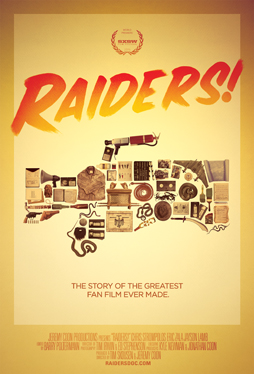 On Wednesday, July 22, I saw three movies at the Fantasia Festival — which made it an average day, to the extent I had an average day at Fantasia. It began at 1 PM, with a documentary called Raiders!: The Story of the Greatest Fan Film Ever Made. After that was a Japanese comedy-drama called 100 Yen Love. Then I made a difficult decision to pass on both the New Zealand horror-suspense film Observance and the American science-fiction film Synchronicity in favour of the Korean historical epic The Royal Tailor. I figured I could watch a later showing of Synchronicity, while Observance was available in the screening room. But this looked like my only chance to catch Tailor on the big screen, and I had an idea it was the sort of film that would take full advantage of the Hall Theatre’s scale.
On Wednesday, July 22, I saw three movies at the Fantasia Festival — which made it an average day, to the extent I had an average day at Fantasia. It began at 1 PM, with a documentary called Raiders!: The Story of the Greatest Fan Film Ever Made. After that was a Japanese comedy-drama called 100 Yen Love. Then I made a difficult decision to pass on both the New Zealand horror-suspense film Observance and the American science-fiction film Synchronicity in favour of the Korean historical epic The Royal Tailor. I figured I could watch a later showing of Synchronicity, while Observance was available in the screening room. But this looked like my only chance to catch Tailor on the big screen, and I had an idea it was the sort of film that would take full advantage of the Hall Theatre’s scale.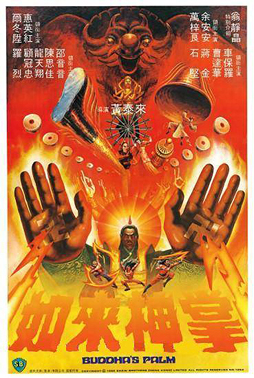 I was at Concordia’s De Sève Theatre early on Tuesday, July 21, for a showing of a 35mm print of the Shaw Brothers’ wuxia fantasy Buddha’s Palm. After that, I had a decision to make. At 5:30 the Nigerian zombie movie Ojuju played directly against a re-release of the British-Canadian horror-suspense movie The Reflecting Skin. Which would I see? And then after that, the first live-action film by director Mamoru Oshii, Nowhere Girl, was directly opposite a quirky romantic fantasy comedy, Haruko’s Paranormal Laboratory. Again: which to see?
I was at Concordia’s De Sève Theatre early on Tuesday, July 21, for a showing of a 35mm print of the Shaw Brothers’ wuxia fantasy Buddha’s Palm. After that, I had a decision to make. At 5:30 the Nigerian zombie movie Ojuju played directly against a re-release of the British-Canadian horror-suspense movie The Reflecting Skin. Which would I see? And then after that, the first live-action film by director Mamoru Oshii, Nowhere Girl, was directly opposite a quirky romantic fantasy comedy, Haruko’s Paranormal Laboratory. Again: which to see?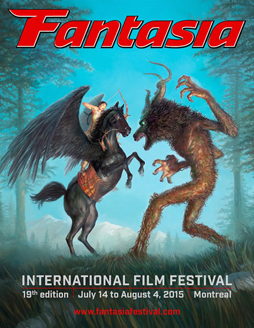 Monday, July 20, was a relatively short day for me at the Fantasia Festival, but one I was looking forward to with great curiosity. At 5 PM I was going to the De Sève Theatre to watch a collection of science-fictional short films: Fantasia’s International Science-Fiction Short Film Showcase 2015 (to give the screening its official name) would show nine films ranging from four to twenty minutes long from seven different countries. Afterwards I’d stick around to see the world premiere of Meathead Goes Hog Wild, a Chicago-set movie about a man pushed to the edge of sanity. It ended up an interesting mixed bag. To go through everything I saw in order:
Monday, July 20, was a relatively short day for me at the Fantasia Festival, but one I was looking forward to with great curiosity. At 5 PM I was going to the De Sève Theatre to watch a collection of science-fictional short films: Fantasia’s International Science-Fiction Short Film Showcase 2015 (to give the screening its official name) would show nine films ranging from four to twenty minutes long from seven different countries. Afterwards I’d stick around to see the world premiere of Meathead Goes Hog Wild, a Chicago-set movie about a man pushed to the edge of sanity. It ended up an interesting mixed bag. To go through everything I saw in order: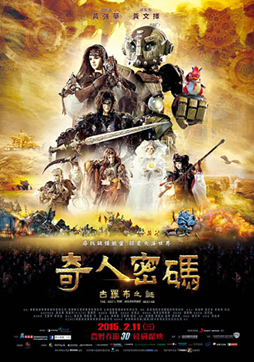 Some days at the Fantasia Festival I find a common theme among the movies I see. And some days I don’t. Sometimes the day’s movies are simply a wonderfully strange mix of things each wonderfully strange in themselves. Bearing that in mind, let’s jump into what I saw on Sunday, July 19.
Some days at the Fantasia Festival I find a common theme among the movies I see. And some days I don’t. Sometimes the day’s movies are simply a wonderfully strange mix of things each wonderfully strange in themselves. Bearing that in mind, let’s jump into what I saw on Sunday, July 19.